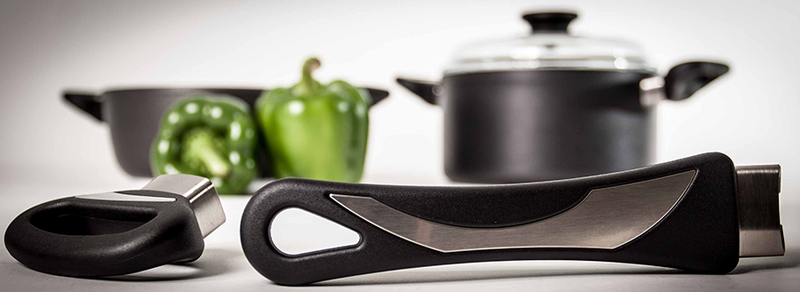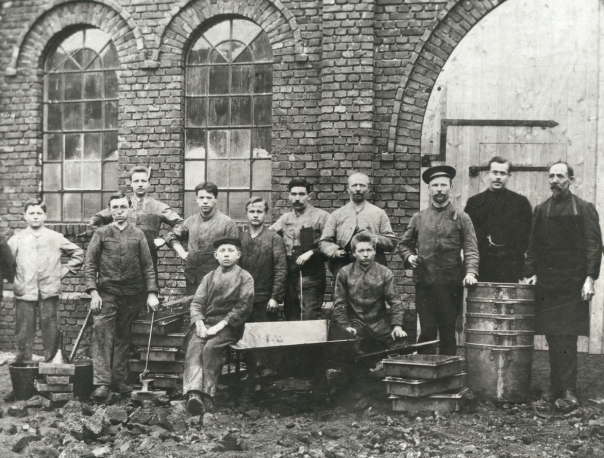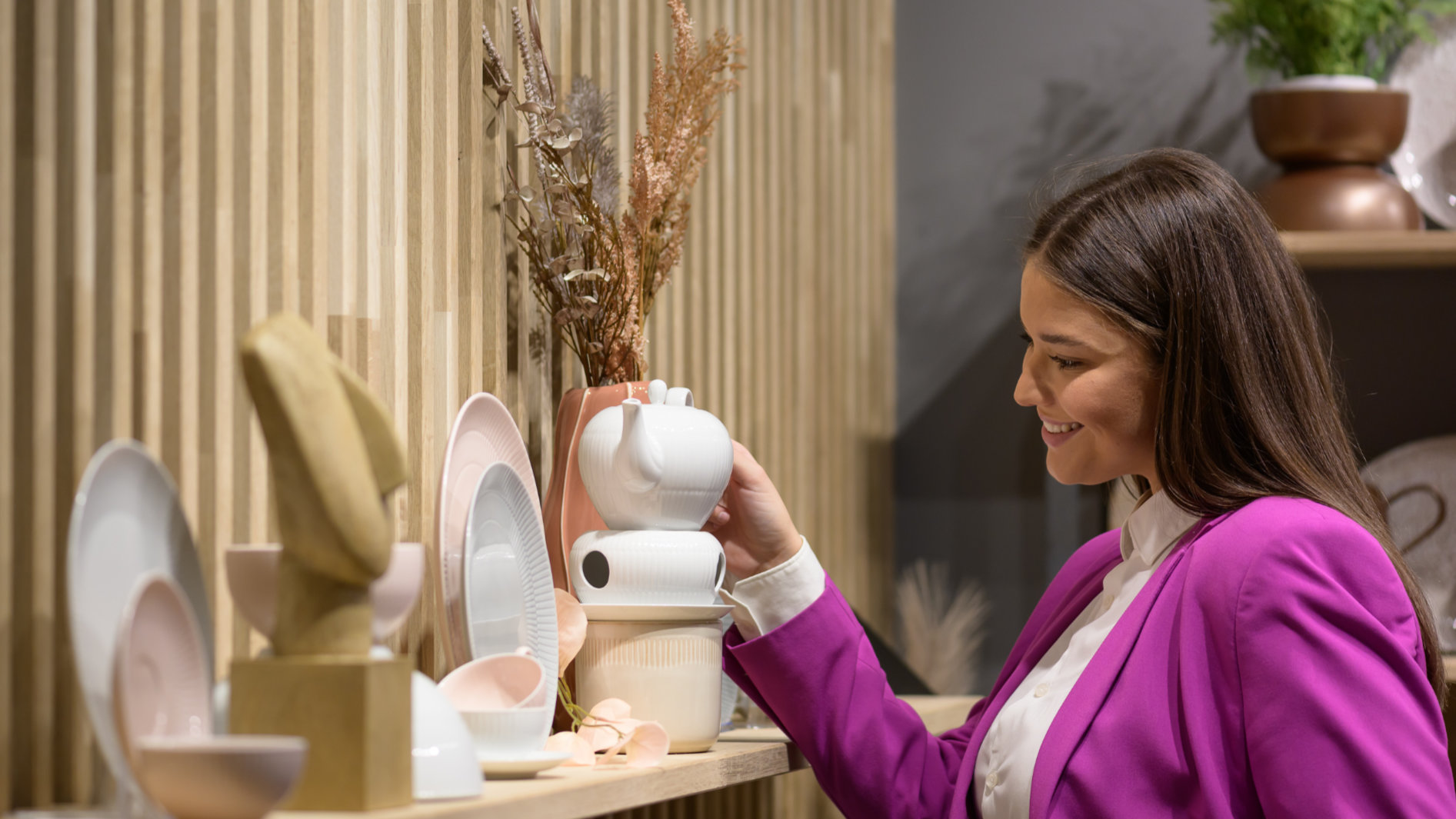100 Years of Experience and Success Firmly in Hand.
Description
Each of the four generations to date has brought to life its own characteristic technical innovations and style in the handles and knobs. They have become pioneers of the entire cookware industry.
The company‘s founder and namesake of the metalware factory Heinrich Baumgarten (1875–1945) developed the “hollow handle” from the massively formed and forced wire handles. This was a rolled sheet metal tube that was filled with sand to keep its full contour during bending. This blank with its diverse forming opportunities could now be painted and riveted to aluminium pots and pans or electrically tack-welded to steel-enamel cookware. This allowed the handle to be much lighter in weight and kept it cooler.
His son Ing. Rudolf Baumgarten (1905–1989), developed this into the “hollow handle” (with closed middle seam) shaped out of a metal sheet – without any sand involved. This handle could be riveted to aluminium products and tack welded to steel enamelled cookware without the annoying double “flaps”. Individual production turned into automatic production on progressive dies. “Butt” welding the handle, i.e. attaching it to the cookware without the welding flaps that made enamel very difficult (and caused high production reject rates) was a ground breaking innovation.
The tight, precisely fitting adjustment to any pot diameter prevented the slurry from getting inside the handle. This welding method – called projection welding – required the development of suitable welding machines and welding electrodes that were offered as a service to the customers. IMPLEX company, founded for that specific purpose, enabled customers to buy, rent or lease these special welding machines. The pot handle model SS-K thus became a global symbol of high-quality enamel cookware – to this day.
Development of an ergonomic hollow metal handle coated in coloured PVC was another highlight of this second generation. It was developed specifically for enamel pans that displaced the previously common round wooden handles from the market.
The third generation under Dipl.-Kfm. Rolf Baumgarten (born in 1937) saw the beginnings of stainless steel cookware, connected with a reduction of the dominant enamel industry in Germany. In those times of change, handles of stainless steel with thermoset inserts for insulation ensured not only the companies continued existence, but also its enormous further development, first in Europe and then more and more by way of global export. It was also helpful that the existing know-how in metal forming permitted shaping the new, difficult-to process stainless steel into “hollow handles” as well. The third generation thus decisively characterised handle appearance. Some examples of this were the 104 “Mondial” model and the idea of “gold-plated” pot and pan handles that turned into a global fashion.
The production of handles and knobs of thermoset, started by Ing. Rudolf Baumgarten made it possible to further increase the range of “fittings” of all kinds. The new “insulation material” thermoset solved the heat problem of metal handles while at the same time opening up a great many more options of shaping (design). This challenged technology to develop new, safe attachments and process the technically demanding, heat-resistant materials. The new Japanese method of injecting thermoset material – as was common in thermoplastics – instead of pressing the thermoset powder was helpful in this. Automated and more cost-efficient production became possible. This was also the start of the “clip-on” attachments. This means the handles were attached with a patented spring system (clips) subject to continuous spring pressure instead of using screws that could become loose. Temperature related elongation could be compensated and balanced. This was also of benefit for the enamel cookware manufacturers as they were able to install handles on pots and pans after enamelling.
Other technical challenges were tackled and mastered in new areas, i.e. in the development of dedicated safety systems and fittings for pressure cookers. The greatest appreciation for Baumgarten handles was expressed by a customer at the Chicago trade fair with the comment, “Here comes the handle man”. Today‘s fourth generation continues the company tradition of developing customer-specific attachment systems, designs and selling them around the world under Dipl.-Kfm. Christian Baumgarten (born in 1965).
The strong expansion of aluminium cast cookware started a new field of application. These specially coated frypans have replaced enamel and stainless pans in the upper quality segment and brought this high-quality cookware production back to Germany.
The growing market at the same time made it possible, as well as necessary, to offer customer specific solutions for bringing out (positioning) the own brand. This promotes the wish of making handles – especially the annoying long pan handles – “detachable”, to optimise storage, transportation and packaging costs and save space in the kitchen. This kind of cookware with detachable handles is also particularly suitable for ovens and dishwashers.
These developments and innovations of the cooking pot and pan handle markets that partially cross generations relied on a great number of well trained and highly motivated long term employees who supported, and still support, the Baumgarten company. With their many own ideas and detailing of the requirements posed to them, they made the success of Baumgarten handles possible:
Our slogan is: “... we can handle it”.
Throughout the generations, Baumgarten placed high value on thorough training of the youth. All production tools for metal production and thermoset moulding are produced in-house.
Address
Baumgarten handle systems KG
Bahnhofstr. 9
57290 Neunkirchen
Germany
Telephone+49 2735 7620
Fax+49 2735 762123
Discover more from us





